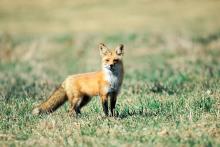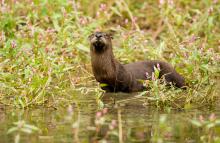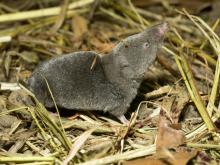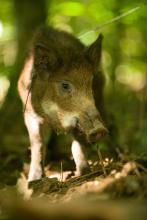Mammals
Media

Species Types
Scientific Name
Vulpes vulpes
Description
The red fox is doglike, with a long, pointed muzzle; large, pointed ears that are usually held erect and forward; moderately long legs; and a long, bushy tail. It occurs statewide but is more common in the northern and western sections of Missouri.
Media

Species Types
Scientific Name
Neogale vison
Description
The American mink is a semiaquatic predator and a member of the weasel family. It is famous for its durable, soft, valuable fur.
Media

Species Types
Scientific Name
Mustela frenata
Description
Long-tailed weasels are small but voracious predators. They are rare in our state but are most common in the south-central and southwestern portions. In summer, they are brown with yellow beneath. In winter their fur is paler or white. The tail has a black tip.
Media

Species Types
Scientific Name
Mustela nivalis
Description
This mouse-sized weasel is found only in Missouri’s northern counties, and abundance varies locally and seasonally, depending on fluctuating rodent numbers — their favorite food.
Media

Species Types
Scientific Name
Lontra canadensis
Description
The North American river otter was once nearly eliminated in Missouri, but thanks to restoration efforts, these powerful swimmers are once again found throughout most of the state.
Media

Species Types
Scientific Name
Glaucomys volans
Description
Flying squirrels don’t actually fly, but they are expert hang gliders. Instead of running around on the ground, they climb to the top of a tall tree, launch into the air, glide downward to the bottom of another tree and repeat the process to get where they’re going.
Media

Species Types
Scientific Name
Ictidomys tridecemlineatus
Description
The thirteen-lined ground squirrel has 13 alternating brown and whitish lines (some may be broken into spots) along its back and sides, creating rows of whitish spots within dark lines. It stands upright to survey its surroundings and dives into its burrow when it senses danger.
Media

Species Types
Scientific Name
Sorex, Blarina, and Cryptotis spp.
Description
Six species of shrews occur in Missouri. They are mouselike but do not have the chisel-like front teeth of rodents. Instead, they have sharp, spiky teeth for hunting prey.
Media

Species Types
Scientific Name
Sus scrofa
Description
Feral hogs cause millions of dollars in agricultural, environmental, and property damage. As they root and wallow, they plow the soil to depths of 2–8 inches — sometimes for many acres! And this is just the beginning of the trouble they can cause to humans, livestock, and the environment.
Media

Species Types
Scientific Name
Poliocitellus franklinii (formerly Spermophilus franklinii)
Description
Franklin’s ground squirrel is brownish gray speckled with black, looking a little like an eastern gray squirrel but with a less bushy tail and smaller ears. It occurs in and near grasslands in the northern quarter of Missouri.
See Also
About Mammals in Missouri
More than 70 species of wild mammals live in Missouri: opossums; shrews and moles; bats; rabbits; woodchuck, squirrels, beaver, mice, voles, and other rodents; coyote, foxes, bear, raccoon, weasels, otter, mink, skunks, bobcat, and other carnivores; deer and elk; and more. Most of us recognize mammals easily — they have fur, are warm-blooded, nurse their young, and breathe air.





















